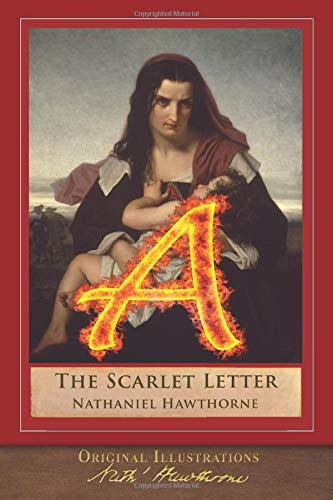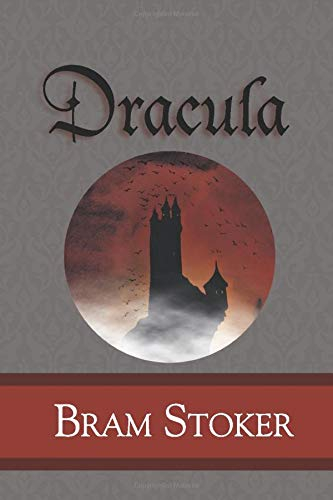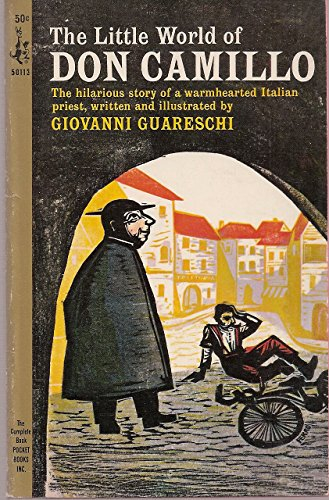Humans are wired to seek the truth. God created us that way. It helps us in finding God who is Truth itself. While science and math give us measurable facts, the place where we reach real, intangible truth is usually in our stories.
Watching: Catholic literary arts
Good fiction helps us recognize who we are, who we want to be and how to live a life of courage, honesty, endurance and compassion. There’s a reason that Jesus told so many parables, after all. If you’ve got the choice between a detailed lecture and an exciting story, which one would you pick?
In today’s world we may come across few parables, but we do have an abundance of novels and short stories. Here are 10 good stories for you to try. Some of the authors are Christian, some are not, but all have truth at the heart of their tales — in a very entertaining package.
“The Epic of Gilgamesh” (2100 BC)
Just because a story is 4,000 years old doesn’t mean you won’t understand it. The basic plot is a lot like a modern superhero movie.

In a 1642 Puritan village, Hester’s husband has been gone for years, but she just had a baby. Hester refuses to identify her lover. Her husband returns, becoming obsessed with identifying the lover and getting vengeance. The lover is tortured by guilt but afraid to confess.
Food for thought
“The Scarlet Letter” looks at very modern topics. The young woman in a loveless marriage who falls in love with a prominent man bears the burden of public condemnation. Meanwhile, her unidentified lover becomes increasingly influential.
This book examines the price of endless guilt, which robs the lover of all peace of mind and health. Hester, by accepting punishment and supporting herself, becomes independent and beloved. Hester’s husband spends seven years tormenting the lover, thereby losing his humanity. All are measured by their personal relationships to God and each other.
Through a Christian lens
Puritans and adultery provide fertile ground for religious reflection. Hawthorne makes sure we understand his points by comparing and contrasting Hester, her lover, her husband and local Puritans.
Our relationship with God is often measured by how we treat and are treated by others. The Puritans are legalistic and unforgiving. Hester and her lover learn through their suffering to rely more closely on God and that his grace is merciful to the repentant.
As a Catholic, I especially appreciate that the lover only achieves spiritual freedom and closeness to God by confessing his sins to others. This was really unexpected, but it worked on several levels.
“Uncle Tom’s Cabin” (1852) — Harriet Beecher Stowe
Contrary to what you expect, this is a fast-moving soap opera loaded with interesting characters and cliffhangers that keep you on the edge of your seat. I love it.

Dracula wants to raise an army of vampires to conquer London. Our little band of heroes uses a combination of innovative technology and old-fashioned religion to fight him. We know good will win, but what sacrifices will have to be made to do it?
Food for thought
Ignoring what is true in favor of our own stereotypes leads to disaster. For example, just like today, a lot of people in “Dracula” have difficulty accepting the supernatural as reality. They deliberately ignore what they can’t explain. Our heroes scoff at superstition when lower classes offer rosaries and garlic, only to find out later that it is effective. They deploy new technology like telegrams, typewriters and trains only to have them fail at crucial moments.
Similarly, the book challenges social stereotypes. The uneducated are wise. Foreigners contribute valuable knowledge. Women equal men in their intelligence and innovation. When they are marginalized in the book, Dracula begins to win.
Through a Christian lens
In this book, the Eucharist and the crucifix have real supernatural power. They aren’t just symbols. The true presence of Christ is what repels Dracula. Dracula compels others to shed their blood for his eternal life. Jesus’ shedding his blood so we may have eternal life is the ultimate good that Dracula cannot bear.
Readmore: Best Sellers In Russian Literature Everyone Should Read, 10 Russian Novels To Read Before You Die
Ultimately we see that Dracula’s selfishness is the perversion of Christ’s complete self-giving. When our heroes’ unselfishness echoes Christ’s then they are their most effective. This is taken to Christ-like levels in Mina Harker’s reminder to the men that Dracula himself once had a soul.
“The Virginian” (1902) — Owen Wister
If you like reading Westerns, you can thank “The Virginian,” which was the first Western novel. Noble cowboys, cattle rustlers, gunfights, courting pretty school marms, and much more were found first in this book.

Ten guests are lured to a remote island where they are being murdered one by one. The killer claims that each of them legally got away with murder and therefore justice is being administered. Can they stop the killer?
Food for thought
Life is full of chaotic moments we may never understand, but a mystery has a definite solution. No wonder we love them.
This complex mystery examines one of life’s big questions — man’s inhumanity to man. Christie gives us a group of people who we quickly learn are murderers, and she explores the different results of intention and a guilty conscience. As we see them being picked off, we have different inclinations of wanting either justice or mercy. Is there only one definition of justice as the killer seems to think?
Through a Christian lens
God delivers both justice and mercy by looking at what is in our hearts. The killer in this book is only interested in justice, in judging for what is perceived to be murder. At least two guests are being judged for deaths that were neither intended or premeditated. What do we have to take into account when we judge others? Are we ever justified in setting our judgment above the law? How do we balance justice and mercy?
“Prince of Foxes” (1947) — Samuel Shellabarger
Samuel Shellabarger’s novels are entertaining and historically accurate in equal parts. “Prince of Foxes” gives you both a fantastic story and a painless education in the politics of warring city states in Renaissance Italy.

Don Camillo is the hotheaded priest of a small Italian village who is always in conflict with the equally hotheaded Communist mayor, Peppone. Don Camillo chats frequently in the church with Christ on the crucifix. We hear Christ’s wise advice and his occasional reprimands at Don Camillo’s tactics.
Food for thought
At first these lighthearted tales seem very simple. However, that simplicity is deceptive, and the problems that the characters must solve are often true to life and painful. Though the stories are set in post-World War II, we can still relate to the problems today.
One soon learns that Don Camillo and Peppone understand and respect one another even though it is usually buried under their frustration at the other’s stubbornness and opposite ideology. They work together for the common good. The important moments of our lives come down to how we live every day rather than on a grand ideological scale.
Through a Christian lens
The most unusual aspect of the stories is Christ on the crucifix. His conversations with Don Camillo are some of the funniest parts of the stories. Of course, Christ has a better grasp of the big picture than Don Camillo, and he is the only person Don Camillo always obeys, though not unquestioningly and often only after arguing. After all, Don Camillo isn’t unfailingly right, and moral victory can just as easily go to his opponent. We don’t get to literally hear Christ the way Don Camillo does, but talking our day over with him is sound practice.
“The Killer Angels” (1974) — Michael Shaara
“The Killer Angels” inspired both filmmaker Ken Burns to make his Civil War documentary and Joss Whedon to create the science fiction Western television show “Firefly.” That’s got to be good writing!

In the 25th century, people have no responsibilities and all the sex and drugs they want. Robots do all the work. The story is told by Spofforth, who is one of the last great thinking robots; Paul, who has taught himself the lost art of reading; and Mary Lou, who has escaped from the system. Their adventures give a fascinating and nuanced look at what it means to be human.
Food for thought
This book was written in 1980 but holds up surprisingly well today. It feels familiar when “Mockingbird” shows people who are apathetic, isolated and despairing because of fewer personal interactions, more time on machines, a lack of permanent relationships and no responsibilities of any sort.
What does it mean to be happy? How do we learn to think? What does it mean to be a family? These big philosophical questions are always connected with the idea that reading matters because it teaches you how to think. We see that reading helps order our thoughts in ways so ingrained that we don’t even recognize it.
Through a Christian lens
Woven through the story is understated Christian symbolism and Paul’s dawning sense that there is something bigger than all of us who can touch us personally. Of course, this is God.
Readmore: The Norton Anthology Of American Literature, Vol, The Norton Anthology Of American Literature
In many ways, Paul’s story parallels that of Joseph in the book of Genesis. Joseph tells his brothers that what they had meant for evil, God had meant for good. Paul is torn away from everything that gives his life meaning, but ultimately his experience sets him on a literal journey of self-discovery and knowledge, which will save not only him but may also help save humanity.
Categories: literature